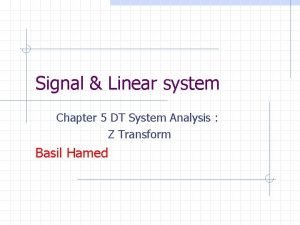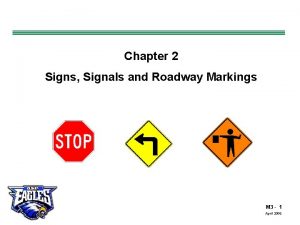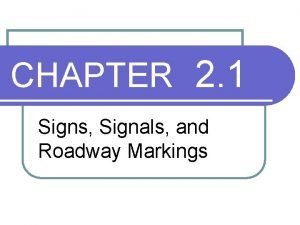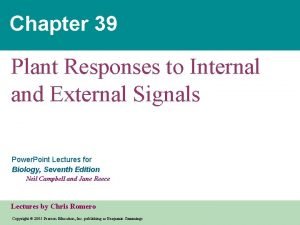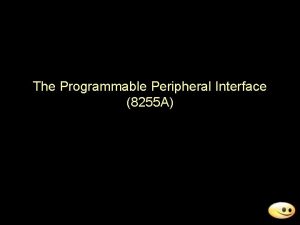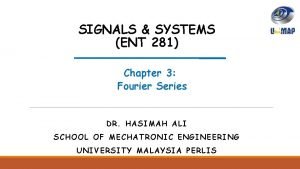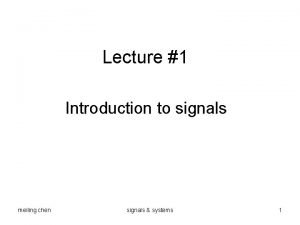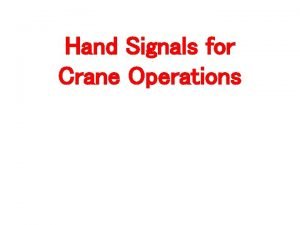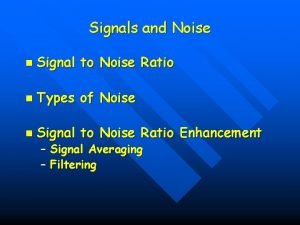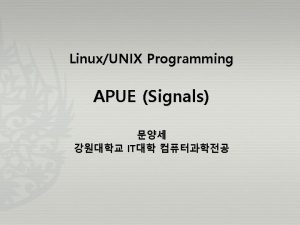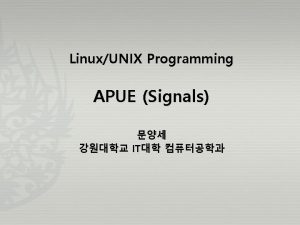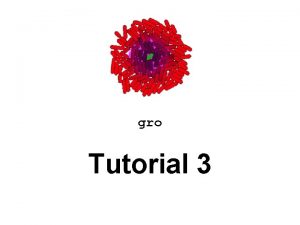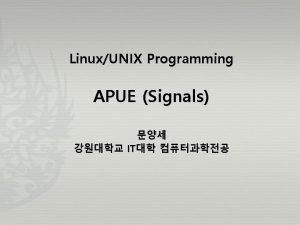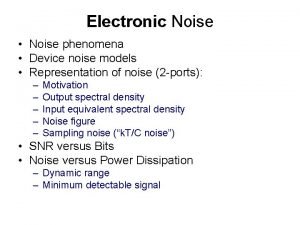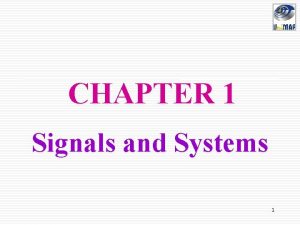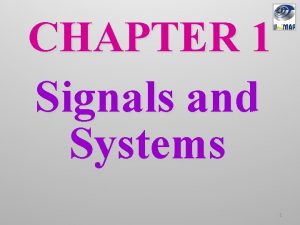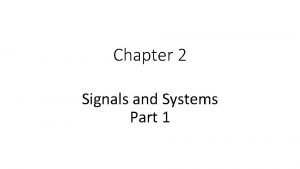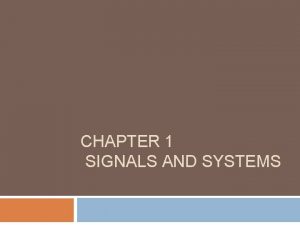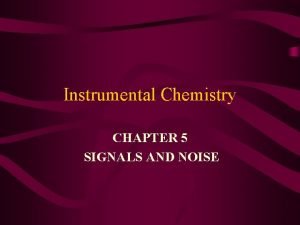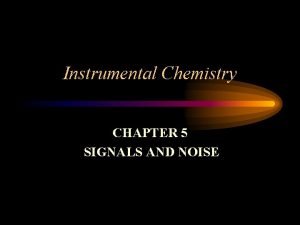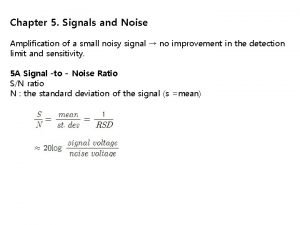Chapter 5 Signals and Noise 1 1 What
















- Slides: 16

Chapter 5 Signals and Noise 1. 1 What is Noise? any ‘unwanted” part of the analytical signal always some noise in a signal 1. 2 Signal-to-noise ratio (S/N) for a set of data (replicate measurements) for a temporal-varying signal S For meaningful measurements, S/N 3,

2 Sources of Instrumental Noise (characterized by their frequency) 2. 1 White Noise – amplitude invariant with respect to frequency Thermal Noise -voltage fluctuation due to random electron motions in the resistive elements k: Boltzmann’s constant T: absolute temperature R: resistance f: frequency bandwidth,

Shot Noise -current fluctuations due to random motion of electrons cross a junction (e. g. , PN interface, space between anode/cathode) I: average current e: charge of electron

2. 2 Flicker Noise – amplitude varies with 1/f, drift in instruments

2. 3 Environmental Noise - different forms of noise that arise from the surroundings - some occurs at known discrete frequencies - some unpredictable, and difficult to correct (e. g. , TV stations, computers, motors, etc)

2. 4 Composite. Noise Spectrum 2. 4 Composite Spectrum Fig. 5 -3 (p. 113)

3 Ø Ø Ø Strategies for S/N Enhancement White Noise reduce f, temp, resistance, and I Flicker Noise make measurements at frequencies >100 k. Hz Shielding & Grounding absorbing electromagnetic noise But signal § often at or near dc (low freq) § often directly proportional to resistance § often directly proportional to current § often measured with transducers having very large f (fast response, PMT f >107 Hz)

3. 1 Reducing f (white noise) 3. 1. 1 Analog filtering: low-pass RC circuit A slow varying dc signal containing high frequencies with bandwidth extending over wide range Fig. 5 -5 (p. 115) High-frequency components rejected, and f reduced

3. 1. 2 Digital filtering: Fourier transform/smooth control in the frequency domain by manipulating pass function Fig. 5 -12 (p. 121) -It is easy to smooth/filter signal as well as noise. Make sure that the result is not distorted - trade-off between resolution and noise. Need high point density to prevent losing information.

3. 2 Increasing f (flicker noise) l l We need to move f to >100 k. Hz… How? - Modulate: encode analytical signal at a high frequency, where 1/f noise is negligible - Amplify the signal at the modulation frequency, while reduce the noise. - demodulate the signal

Lock-in Amplifier Chopper 1. Modulate 2. Amplify modulated signal Fig. 5 -8 (p. 117) 3. Demodulate

3. 3 Signal Averaging l Total intensity of signal: increase linearly with the number (n) of replicate signals l Noise: increase as (n)1/2 à S/N increase as (n)1/2

3. 3. 1 An Example for Signal Averaging

3. 3. 2 Signal Averaging For a Spectrum Get S/N increased with n½ Need good synchronization for replicate scan Fig. 5 -10 (p. 119)

3. 3. 3 Boxcar Averaging l A approach for smoothing irregularities l A single –channel signal averager select a single delay time integrated signal over selected gate time average signal for n-replicate repeat at new delay time S/N increases with (averaging time)1/2 Fig. 5 -11 (p. 119)

3. 3. 3 Boxcar Averaging select a single delay time integrated signal over selected gate time average signal for n-replicate repeat at new delay time Fig. 5 -11 (p. 119)
 Animals and human language chapter 2
Animals and human language chapter 2 Duality in linguistics
Duality in linguistics Communicative and informative signals
Communicative and informative signals Pcm companding
Pcm companding Signals and systems oppenheim solutions chapter 5
Signals and systems oppenheim solutions chapter 5 Flourescent optic yellow signs
Flourescent optic yellow signs A short section of corrugated roadway
A short section of corrugated roadway International signs drivers ed
International signs drivers ed Guide and international signs
Guide and international signs Drivers ed chapter 2 signs signals and roadway markings
Drivers ed chapter 2 signs signals and roadway markings A short section of corrugated roadway
A short section of corrugated roadway Chapter 39 plant responses to internal and external signals
Chapter 39 plant responses to internal and external signals Port a+ port c upper forms group a ports
Port a+ port c upper forms group a ports Trigonometric form of fourier series
Trigonometric form of fourier series Signals
Signals Crane signal dog everything
Crane signal dog everything Beacon
Beacon




